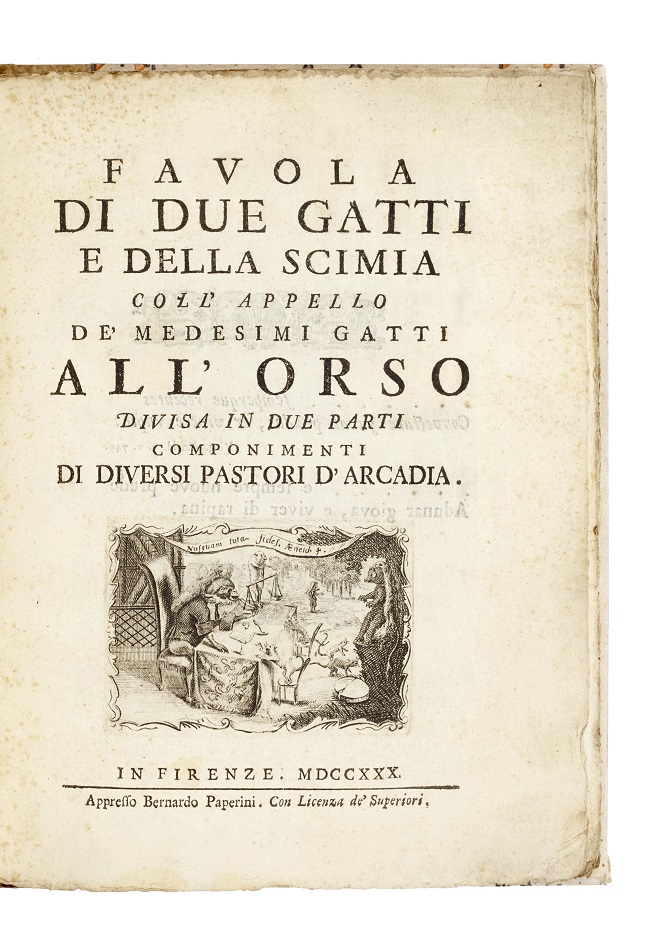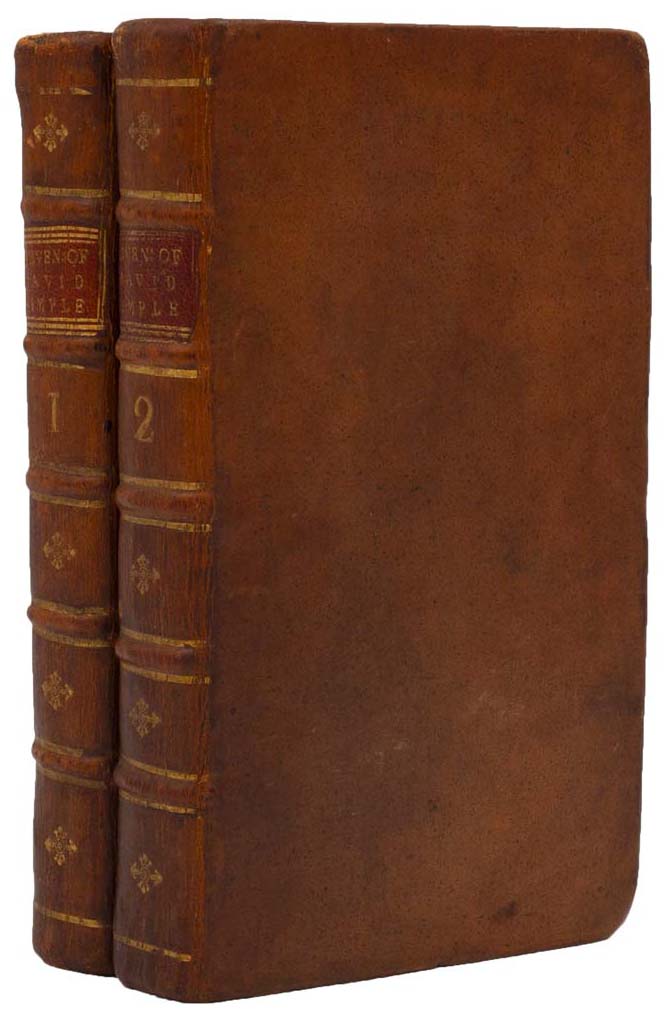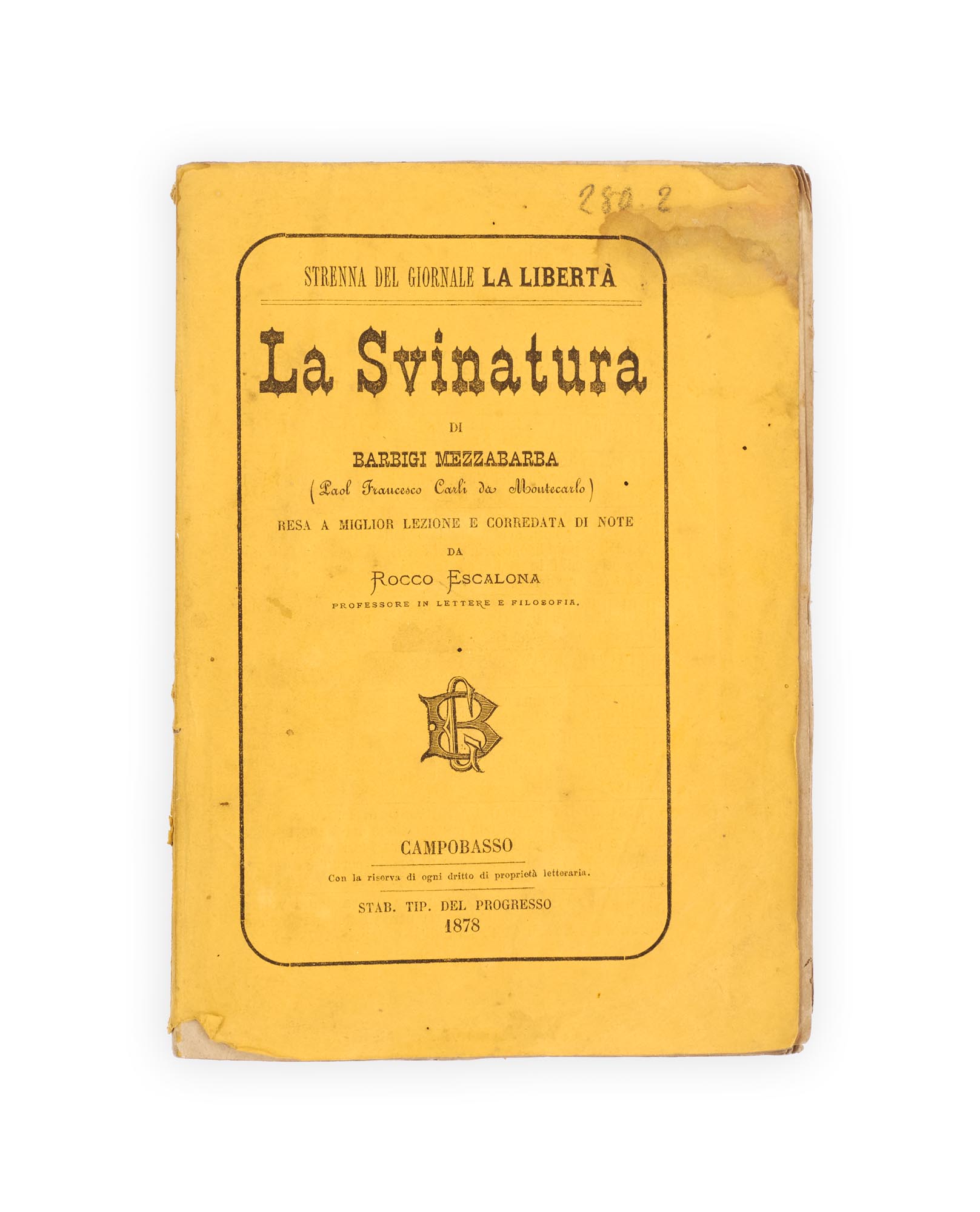
[ACCADEMIA DELL’ARCADIA.]
Favola di due gatti e della scimia coll’ appello de’ medesimi gatti all’ orso, divisa in due parti, componimenti di diversi pastori d’Arcadia.
Florence, Bernardo Paperini, 1730.
4to in 8 and 6, pp. [3], 4-27, [1], with copper-engraved title vignette, woodcut ornaments and initials throughout; minor foxing to first and final leaves, but a very good copy in recent paste-paper backed boards with patterned paper sides, gilt paper lettering-piece to spine, uncut with deckle-edges.

Added to your basket:
Favola di due gatti e della scimia coll’ appello de’ medesimi gatti all’ orso, divisa in due parti, componimenti di diversi pastori d’Arcadia.
First complete edition. A rare fable in parallel Latin and Italian verse by members of the Accademia dell’Arcadia, comprising Due gatti ed una scimia (first published in 1728) and the first appearance of the second part, Appello de’ due gatti all’ orso. Both are published only pseudonymously under the pastoral names assumed by Arcadians, the first part being authored by ‘Nadisto’ and ‘Ergisto Balirio’, the second by ‘Telindo’ and ‘Nicotele’, all members of the prestigious literary society for the promotion of pastoral poetry over the grandiose baroque style popular at the time. This simple fable in traditional metrical forms, attributed to the fabulist Francesco Lelli, is a fine example of their ideals.
OCLC records only five copies worldwide and none in the UK.

